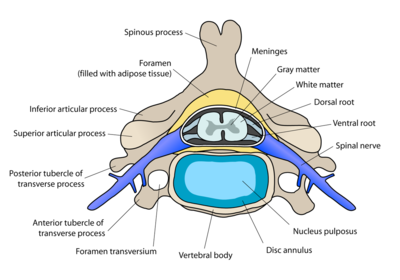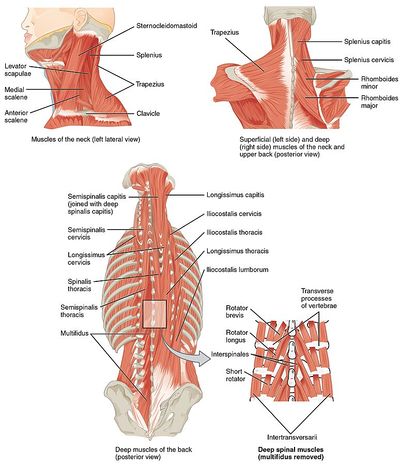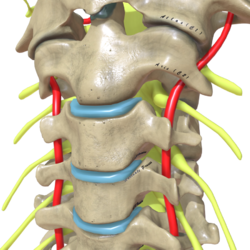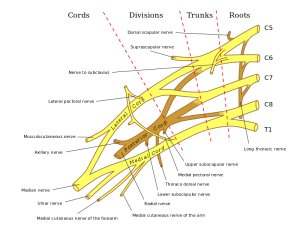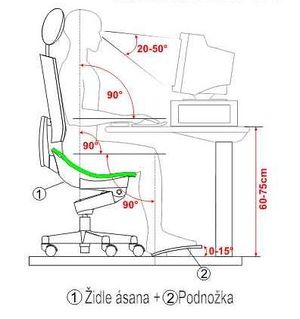Office Ergonomics and Neck Pain: Difference between revisions
No edit summary |
No edit summary |
||
| Line 52: | Line 52: | ||
== Affect of Office Ergonomics on the Neck == | == Affect of Office Ergonomics on the Neck == | ||
[[File:Ergonomics workstation.jpg|thumb]] | |||
According to the Collins English Dictionary ''<nowiki/>'ergonomics is the study of how equipment and furniture can be arranged in order that people can do work or other activities more efficiently and comfortably.''' | According to the Collins English Dictionary ''<nowiki/>'ergonomics is the study of how equipment and furniture can be arranged in order that people can do work or other activities more efficiently and comfortably.''' | ||
Revision as of 11:31, 16 August 2020
Introduction[edit | edit source]
Neck pain is more common among office workers than any other occupation, while the annual prevalence ranges from 42-63%. The socioeconomic burden is another issue as neck pain impacts the employer, as well as the employee's performance, health, productivity, medical costs, and compensation claims[1].
One study indicated that 90% of employees spend more than 4hours/ day behind a computer[2]. This emphasizes the need for workplace interventions to reduce and prevent neck pain in office workers, as well as reduce costs and improve productivity.[1]
Risk Factors[edit | edit source]
- Gender: Females are at higher risk for developing neck pain and research suggest the reason may be that women have a higher musculoskeletal load and report symptoms more often.
- Age: The risk of developing neck pain increases until 50 years of age and then starts to decline.
- Exercise frequency: Exercising at least 3 times a week may reduce the risk of developing neck pain by 1.5 times.
- Mobility of the cervical spine.
- Prolonged sustained posture: Holding the neck in a semi-flexed position for a long duration increases the risk of developing neck pain. The neck and upper back muscles are required to provide stability to the 'moving' arms, hands and finger, which in turn leads to muscle tension and repetitive strain. Prolonged sitting posture affects the natural curvature of the spine, while also increasing the pressure on vertebral discs, ligaments, and muscles.
- Workstation design and sitting posture/ ergonomics: A poorly designed working station has a direct impact on musculoskeletal injuries such as neck pain, as it overloads certain body parts.
- Psychological stress: Slightly elevated stress levels can increase the risk of developing neck pain by 1.6 times. Other aspects like anxiety, depression and support also increase the risk of developing neck pain.[3][4]
Relevant Anatomy[edit | edit source]
The vertebrae[edit | edit source]
The cervical spine has 7 vertebrae extending from the base of the skull to the thoracic spine at the level of the shoulders. The top 2 cervical vertebrae, the atlas (C1) and axis (C2), are unique from the others as they allow a greater range of motion and the nodding or rotation movements of the head. The rest of the cervical spine consist of:
- Smaller vertebral body.
- Large, triangular vertebral foramen.
- Bifid spinous processes.
- Transverse foramina for the sympathetic nerves, vertebral artery and vein.
The vertebral discs also consist of the disc annulus and nucleus pulposus as other vertebrae throughout the spine and act as shock absorbers.
The Ligaments[edit | edit source]
There are 6 main ligaments in the cervical spine namely;
- Anterior and posterior longitudinal ligaments: this ligament covers the entire spine's vertebral bodies and disc anteriorly and posteriorly.
- Interspinous ligament: this ligament connects the spinous process of each vertebra throughout the entire spine.
- Ligamentum flavum: this ligament connects the lamina of each vertebra throughout the entire spine.
- Nuchal ligament: this ligament is an extension of the supraspinous ligament covering the spinous processes of C1-7
- Transverse ligament: this ligament anchors the dens of the axis in place.
Muscles[edit | edit source]
Muscles of the cervical spine include;
- Sternocleidomastoid
- Scalenii (anterior, middle and posterior)
- Upper trapezius
- Levator Scapula
- Splenius capitis and - cervicis
- Semispinalis capitis and - cervicis
- Longissimus capitis
- Iliocostalis cervicis
Nerves[edit | edit source]
There are eight cervical nerves (C1-8). All the nerves emerge above their corresponding vertebra except for C8, which emerges below C7.
Affect of Office Ergonomics on the Neck[edit | edit source]
According to the Collins English Dictionary 'ergonomics is the study of how equipment and furniture can be arranged in order that people can do work or other activities more efficiently and comfortably.'
The height and the distance of the computer monitor, chair, and desk has a direct impact on neck pain.
- The chair influences the pressure distribution and the curvature of the spine, which may lead to increased pressure through the vertebral bodies, compensation, muscle fatigue and asymmetry.
- If the monitor is too far away, the individual is required to extend their neck forwards and slouch to see better.
- When the arms aren't supported on the armrests or the desk it provides an excess load on the neck and scapula stabilizers leading to muscle fatigue and strain.
- The sustained position of the neck also fatigues or strains the neck muscles.
- The angle of the gaze also affects the neck position - whether the neck is extended or slightly flexed.
Physiotherapy Management[edit | edit source]
Prevention[edit | edit source]
Rehabilitation[edit | edit source]
Education[edit | edit source]
References[edit | edit source]
- ↑ 1.0 1.1 Chen X, Coombes BK, Sjøgaard G, Jun D, O’Leary S, Johnston V. Workplace-based interventions for neck pain in office workers: systematic review and meta-analysis. Physical therapy. 2018 Jan 1;98(1):40-62.
- ↑ Shikdar AA, Al-Kindi MA. Office ergonomics: deficiencies in computer workstation design. International Journal of Occupational Safety and Ergonomics. 2007 Jan 1;13(2):215-23.
- ↑ Hush JM, Michaleff Z, Maher CG, Refshauge K. Individual, physical and psychological risk factors for neck pain in Australian office workers: a 1-year longitudinal study. European spine journal. 2009 Oct 1;18(10):1532-40.
- ↑ Cagnie B, Danneels L, Van Tiggelen D, De Loose V, Cambier D. Individual and work related risk factors for neck pain among office workers: a cross sectional study. European Spine Journal. 2007 May 1;16(5):679-86.
